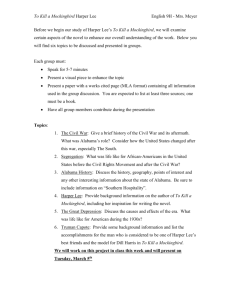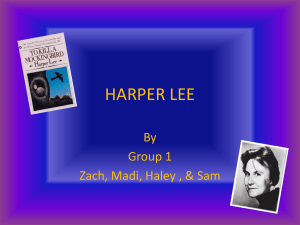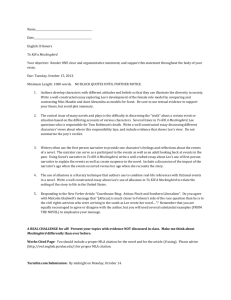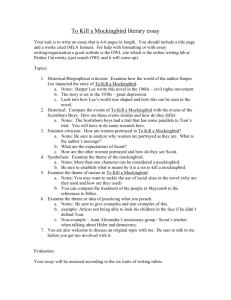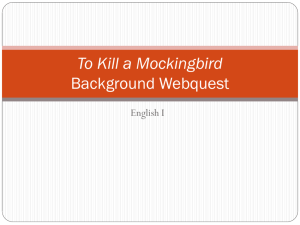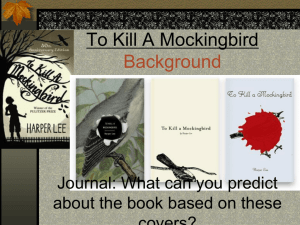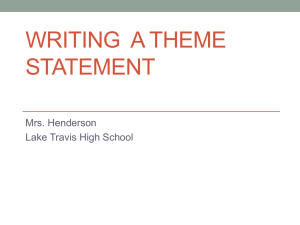To Kill a Mockingbird
advertisement
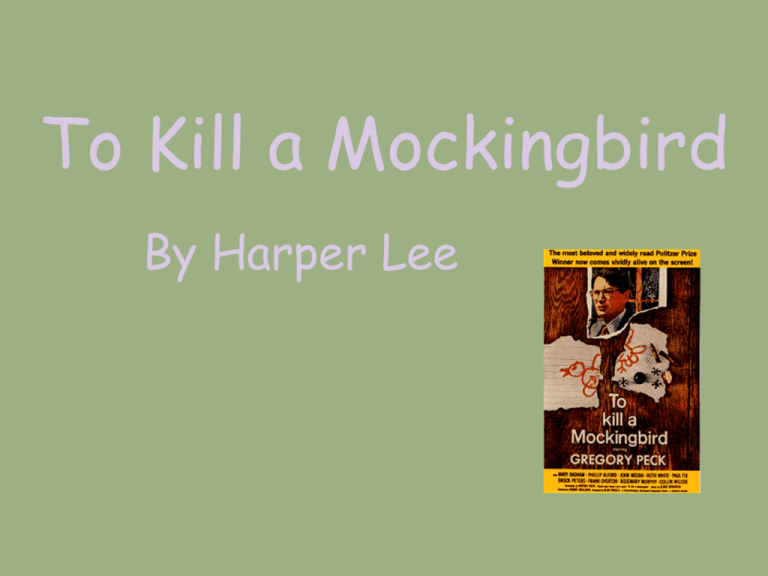
To Kill a Mockingbird By Harper Lee Why Do We Read To Kill A Mockingbird? • We can all agree on a few things…..racism exists….we hate it, but it does. • Racism is not just about color. It is about gender, age, economic status….etc. • The great Abraham Heschel once said, “Racism is man’s gravest threat for a minimum of reason.” • The truth is that people hate. There is never a good reason, time, or place, but hatred rules this world. Even though hating someone takes more energy, people, sadly, prefer to hate rather than love. Why Do We Read To Kill A Mockingbird? • During the 1960’s, when Harper Lee wrote To Kill A Mockingbird, she wasn’t just talking about racism. She wanted to open the nation’s eyes to the fact that hatred existed in every corner of the most secret and exposed portions of our lives. • Harper Lee wanted to make the world take a hard look, not at just racism, but hate. Why we hate and how we can change the world if we take off our blinders and love the way we were intended to love….without noticing color, gender, age, or economic status. • So, to answer the question, why do we read To Kill A Mockingbird? The simple truth is that we still believe in the world that Harper Lee believed could exist. A world that looked past all the hatred and where for once love triumphed over hatred. A Few More Truths… • Harper Lee never wrote another book…To Kill A Mockingbird was her one and only, her biggest message to the world. • It has never been out of print. The only book to ever outsell To Kill A Mockingbird is the Bible. • There are words in this novel, just like any novel, that are not appropriate and will be offensive. We understand that Harper Lee is making a point, but I won’t say them and you won’t say them….PERIOD. • This book has stood the test of time…there is a reason for that….figure it out. Background….Where did Harper Lee get her ideas? SETTING OF THE NOVEL Maycomb, Alabama 1930’s – Great Depression – Prejudice and legal segregation – Ignorance 1930’s – The Great Depression began when the stock market crashed in October, 1929 • Businesses failed, factories closed – People were out of work – Even people with money suffered because nothing was being produced for sale. • Poor people lost their homes, were forced to “live off the land.” Racial prejudice was alive & well. Although slavery had ended in 1864, old ideas were slow to change. Racial separation: Segregation Gender Bias or Prejudice • Women were considered “weak” • Women were generally not educated for occupations outside the home • In wealthy families, women were expected to oversee the servants and entertain guests • Men were not considered capable of nurturing children • Women were “encouraged” not to take work away from men. Some states passed laws against women working. “White trash” • Poor, uneducated white people who lived on “relief “ – lowest social class, even below the poor blacks – prejudiced against black people – felt the need to “put down” blacks in order to elevate themselves Legal issues of the 1930’s which impact the story • Women given the right to vote in 1920 • Juries were MALE and WHITE • “Fair trial” did not include acceptance of a black man’s word against a white man’s Prejudice in the novel Race Gender Handicaps Rich/Poor Age Religion Scottsboro Trial • 1931—9 black males ages 13 to 21 were arrested while “riding the rails” for raping two women. • After a quick trial (two weeks after their arrest) all were found guilty and 8 sentenced to be executed with the youngest sentenced to life imprisonment—these verdicts were overturned by a higher court • One of the two women recanted her “story” and testified at a second trial that neither she nor the other woman had been raped • In 1936, 4 of the men were acquitted (found innocent). Four more were released in the 1940s and the ninth man was released from prison in 1950. • In 1976, the men were officially pardoned by the state of Alabama. Only one still survived. Characters • Atticus Finch - an attorney whose wife has died, leaving him to raise their two children: – Jem – 10-year-old boy – Scout – (Jean Louise), 6-year-old girl • Tom Robinson – a black man accused of raping a white girl; he is defended at trial by Atticus Point of View • First person – Story is told by Scout, a 6-year-old girl at the beginning of the novel – Harper Lee is a woman; Scout represents the author as a little girl, although the story is not strictly autobiographical Reading the Novel • Setting is all important –be aware of the “where” and “when” as you begin • Point of View – the novel is shaped by the voice of a young girl who sees the story from a position of naive acceptance • “Goodness vs. Ignorance or Evil” is an important theme
